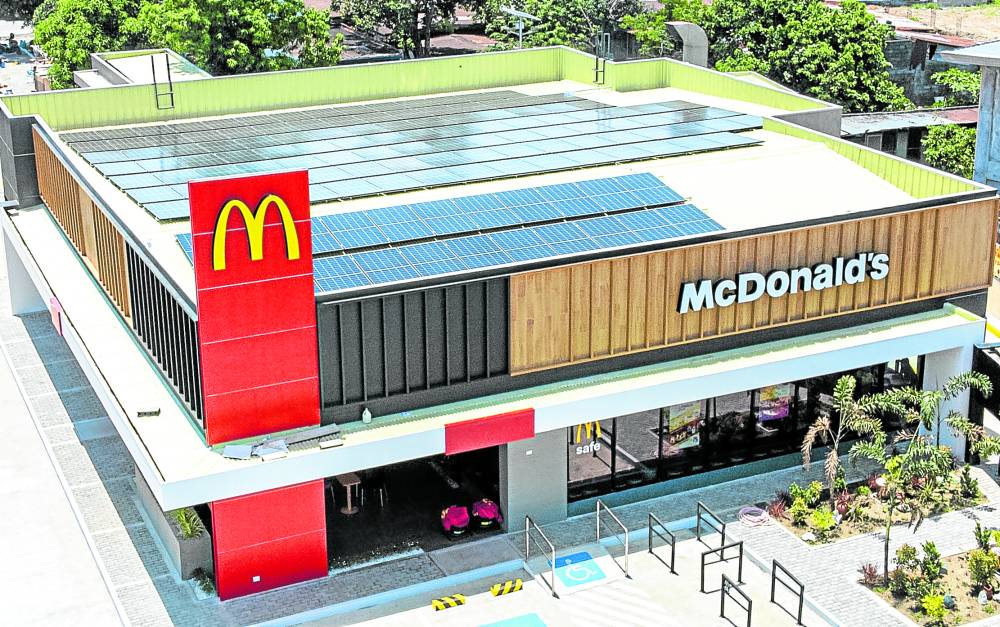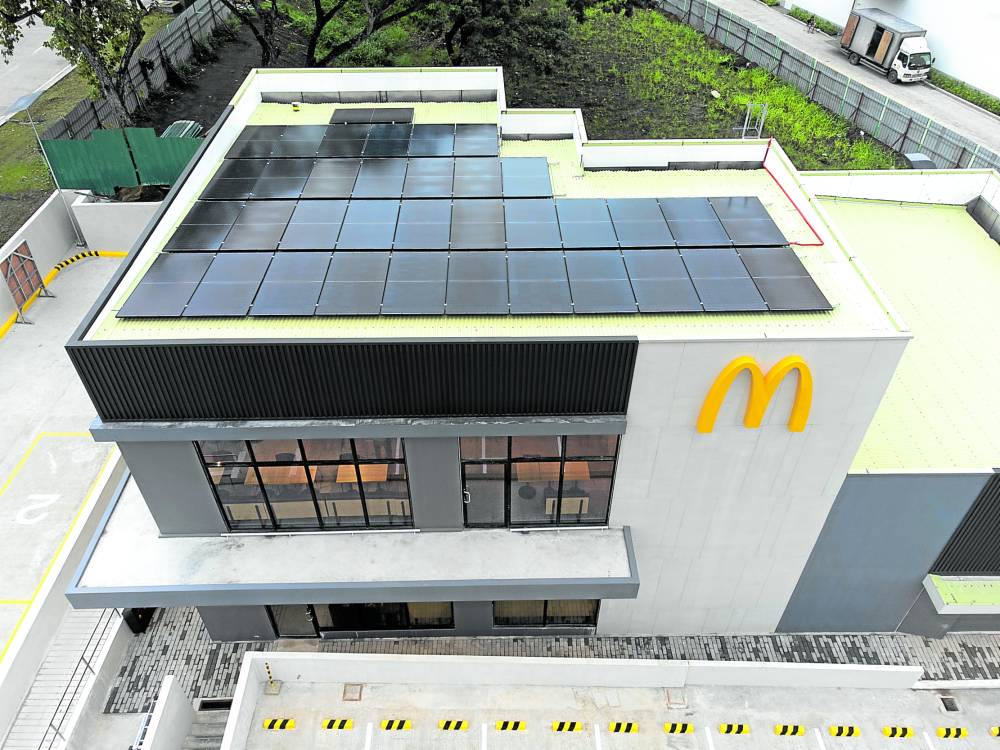Fast food chain harnesses power of the sun

ENERGIZED McDonald’s Arayat Pampanga, one of the first 25 McDo stores with solar rooftop —Contributed photos
Nearly a month after President Marcos reiterated the government’s goal of increasing the share of renewables in the country’s energy mix in his second State of the Nation Address, key private sector players face the pressure of implementing projects to meet such target.
The Philippines is currently still far from the 35-percent renewable share goal at 22 percent, with coal dominating the country’s total energy capacity at nearly 60 percent.
Faced with this challenge, fast-food giant McDonald’s Philippines has been intensifying its shift to environment-friendly and sustainable operations since its first store welcomed Filipinos in 1981.
Through its Green & Good initiative, McDonald’s is now utilizing solar panels to power 25 of its more than 700 stores nationwide with renewable energy. This forms part of the company’s effort to pioneer “environmental responsibility” within the quick-service restaurant space, according to McDonald’s Philippines president and chief executive officer Kenneth Yang.
“We will continue to find solutions to make our operations more efficient and better for the planet. With the results of our Green & Good initiatives so far, we believe that it is possible to grow sustainably,” Yang shares.
Solar program takes off
McDonald’s Philippines’ solar panel program began along UN Del Pilar Avenue, one of the busiest streets in Manila, in 2020.
It was the first of many stores to have solar panels installed on their rooftops, and this initial shift has encouraged McDonald’s to aim for having 130 Green & Good local stores by the end of the year.
McDonald’s did not limit its energy transition program in Metro Manila. Green & Good stores are also found in the provinces of Pampanga, Cavite, Antipolo and Laguna, the company says.
The effectiveness of this transition strategy is backed by the 546,000 kilowatt-hours of electricity saved in the 25 existing Green & Good stores, which McDonald’s says reduced consumption to 36 percent compared with stores that are not running on solar power.
At the same time, its six flagship Green & Good stores alone have reduced 52,500 kilograms of carbon dioxide emissions annually. Each store has saved 102,000 liters of water. Apart from lowering energy and water consumption, McDonald’s adds that it has also reduced plastic waste by 273 metric tons through the use of 60 percent paper- and fiber-based packaging and strawless lids.
On-the-go bike commuters are also welcome in select stores that are equipped with bike-and-dine areas, while e-charging stations are available for two-wheel electric vehicles.
Construction is likewise limited offsite, and repurposed and alternative building materials are used to promote “sustainable construction methods.”
“With more than 700 stores nationwide, McDonald’s Philippines carries a strong commitment to environmental responsibility … Our stakeholders can look forward to enjoying more McDonald’s stores that are Green & Good in the future,” Yang says. INQ

